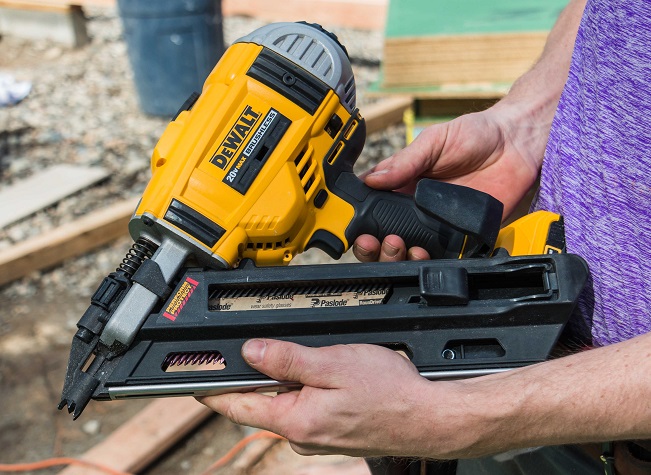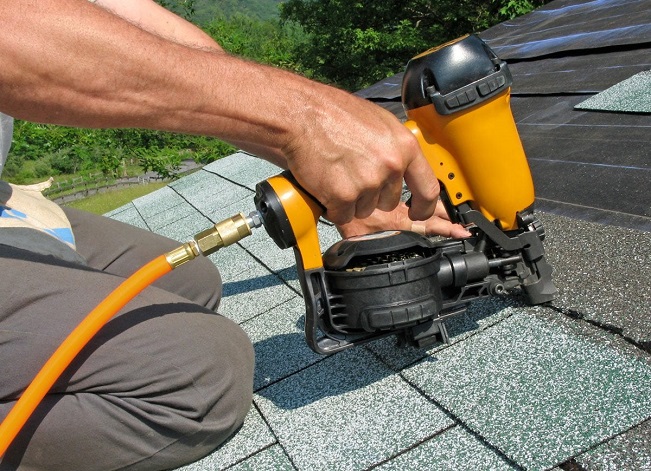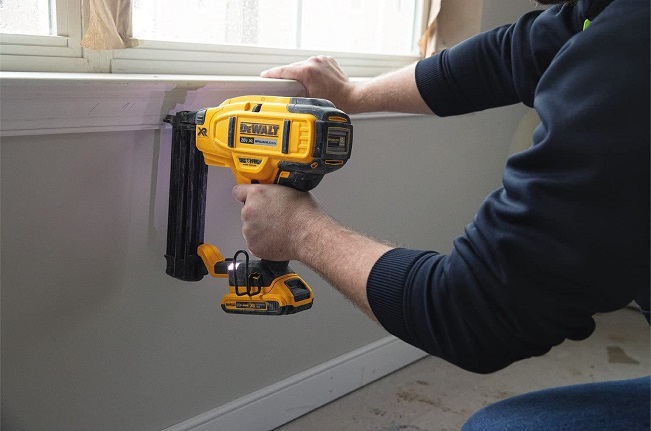Nail guns are without a doubt the fastest and safest way to drive nails. They fire instantly and can drive nails into hardwood or soft materials like wallboard without splitting the wood. The market for DIY enthusiasts and pro contractors is expanding rapidly and for good reason. Besides the basic tools every homeowner should own, a nail gun can be the definition of convenience. But with many options to choose from, there’s a lot to consider when buying a nail gun. You want to find one that can handle any project you throw at it, fits comfortable in your hand, and has the power you need for a stronghold. By learning the basics of cordless vs pneumatic nail guns and factors that should be considered before buying one, you can decide according to your needs.
Cordless: They’re Lighter and More Affordable

Cordless nail guns are taking over. They’re more affordable and versatile than pneumatic models, and they’re much lighter and quieter than early battery-powered tools. With a battery and no compressor to haul around, you can use a battery powered nail gun just about anywhere. The main downside of cordless models is that their performance depends on the quality of their batteries.
Batteries
The lithium-ion batteries used in cordless guns provide more power than older nickel-cadmium or nicad batteries, which gradually lose their ability to hold a charge as they get older. Lithium-ion batteries also have a higher tolerance for cold weather than nicads, so your gun will work better in the winter. Lithium ions don’t leak like acid, either: if you leave a battery out in the rain (or if it gets punctured), it won’t start to corrode and ruin your tool.
Framing vs Finishing
There are two kinds of cordless nail guns: “framing” and “finishing.” The biggest difference between the framing and finishing guns is the size of their magazine, which holds the nails. Framing guns hold 100-110 nails per battery charge; finishing guns hold up to 30. The advantage of framing guns is that they work well for jobs where you consistently drive lots of nails into relatively thick material (e.g., for building decks). They’re also more rugged than their smaller-nailing-capacity counterparts; they’re built to handle more abuse without breaking down. The advantage of finishing guns is that they are lighter weight, smaller, easier on your hands, faster changing out magazines, more precise, less tiring to use, and better suited for jobs where you drive only a few nails at a time (e.g., nailing trim onto baseboards).
Multipurpose Use
A battery powered nail gun is portable and will come in handy for any project you have at hand. Whether you need to hang art on the wall or build something bigger, this is an easy solution that will save you time. You can even take it with you when you move, so you’ll have something to help with your next remodel!
Pneumatic: They’re More Powerful

A pneumatic nailer is a device that provides air pressure to drive nails into wood or other harder material. It uses an air compressor, which is powered by electricity. Pneumatic nailers are commonly used in construction and home improvement projects. They can be used to nail down flooring, including plywood and hardwood, and are also used for framing walls, subfloors, studs, roofing materials and other applications. Pneumatic nailers are not to be confused with air compressors, which are motorized devices that provide pressure for pneumatic nailers.
Framing Nailer
The most common kind of pneumatic nailer is the framing nailer. Framing nailers have longer barrels than staplers or brad nailers, so they provide greater contact with the surface being nailed. Framing nailers are considered professional power tools. A typical framing gun will use an 18-gauge straight finish nail with a 2-inch to 3-inch length depending on the thickness of the materials being nailed down.
Pros and Cons
Pneumatic nailers have some advantages that make them worth considering for certain projects. They tend to be able to drive a wider range of nails than cordless models, they don’t need recharging, and they are liable to cost less to buy. The biggest disadvantage of a pneumatic nailer is the air compressor you need to use it. It’s hard to move an air compressor around, so you may be limited in the places where you can work. You also need an area with access to electricity to plug it in. You might not be able to move your air compressor around enough to get a really good workflow going, so you’re more likely just using it as a kind of backup or for specific jobs that require its special capabilities.
Comparison

The most important thing to keep in mind, when you are trying to decide between pneumatic and cordless nail guns, is that both of them are better than manual hammer-and-nail. You can do almost anything with a good pneumatic nailer. You can build a house, or a deck, or reroof the garage. A cordless nail gun has two big advantages over a pneumatic: it’s quiet and more convenient to use. That’s why they’re most often used by homeowners that need some fixes around the house from time to time or creative projects that don’t require professional power tools. But if you’re going to do any serious building, you need pneumatic power: the guns are bigger and more powerful, and they don’t run out of batteries.
To Sum Up
Cordless nail guns do have advantages over the pneumatic types, but they also have disadvantages that need to be taken into account when considering what type of impact tool to use. Ultimately, which tool you choose will require some thought, but both are effective and can accomplish the task at hand. If you plan to use your nail gun frequently and consistently, you may want to choose a cordless framing gun. But if you have some big projects in mind, investing in a pneumatic nailer is a great choice that will help you in the long run.
























